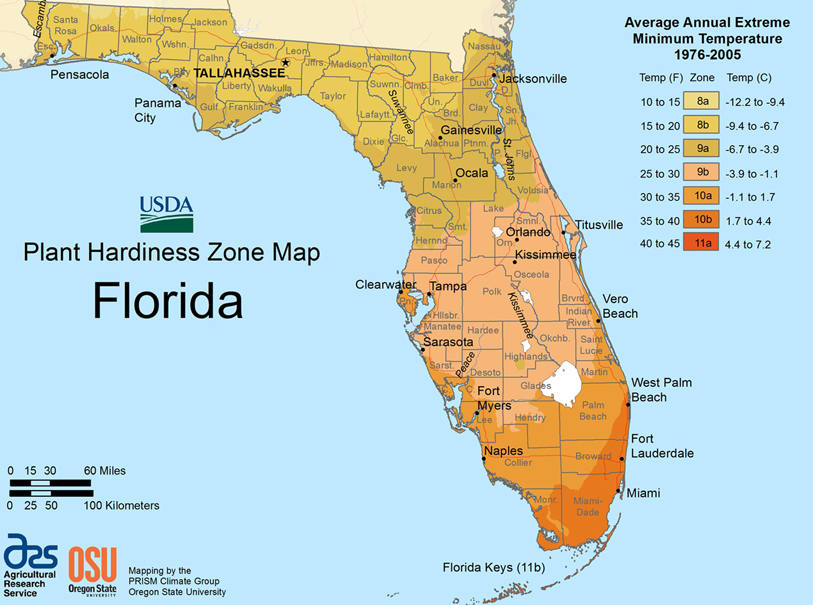Tips for Selecting Plants
1. What plants are well suited to your site?
• How much light does your garden get? Too little light can make plants weak and leggy; too much can scald the plant.
• Is the plant cold hardy for your zone? Florida includes USDA Zones 8 to 11a. Enter your zip code or location to filter plants for your zone.

• To water less, select plants suited to the soil’s moisture conditions.
• Group plants with similar water requirements to avoid overwatering.
• What’s your soil like? Examine the texture and get a soil test to check pH and fertility.
• Test your water quality if irrigating with reclaimed water.
• Select disease and pest resistant plants.
• Learn more:https://edis.ifas.ufl.edu/ep416
2. What attracts butterflies?
• Butterflies need both host and nectar plants to complete their life cycles.
- Host plants are food for the butterfly larvae (caterpillars), so that is where butterflies lay their eggs.
- Nectar plants (flowers) provide food for adult butterflies.
- Different butterfly species need different kinds of host plants.
- Remember that host plants are meant to be eaten – you will see damaged leaves. This is a good thing!
• Choose a variety of flower colors, shapes, and sizes to appeal to different butterfly species.
- Many butterflies like a variety of bright colors, but some have color preferences.
- Butterfly species with different feeding behaviors and proboscis lengths prefer different sizes and shapes of flowers.
- Where do you see butterflies in your area? What colors and kinds of flowers do they like?
• Keep your garden in bloom through different seasons.
- Longer bloom time helps feed butterflies throughout their lifespan.
- Butterfly species have different flight periods, so you can attract more different butterflies.
• Learn more:http://edis.ifas.ufl.edu/uw057
3. Select plants with different aesthetic qualities to create a visually pleasing garden.
• Texture – use a variety of textures for interest:
- Coarse - large, irregular leaves
- Fine - tiny leaves and branches
- Medium texture - average size, simple-shaped leaves
• Color - most flowers should be warm colors (red, yellow and orange). A small amount of cool colors (blue and purple) will add contrast and create color harmony.
• Shape – use a variety of shapes to create interest. Typical shapes include: round, irregular, arching, cascading, spreading and mounding.
• Size – a variety of sizes adds interest and definition. Mix tall plants (small trees), with medium height shrubs, and small, low groundcover.


